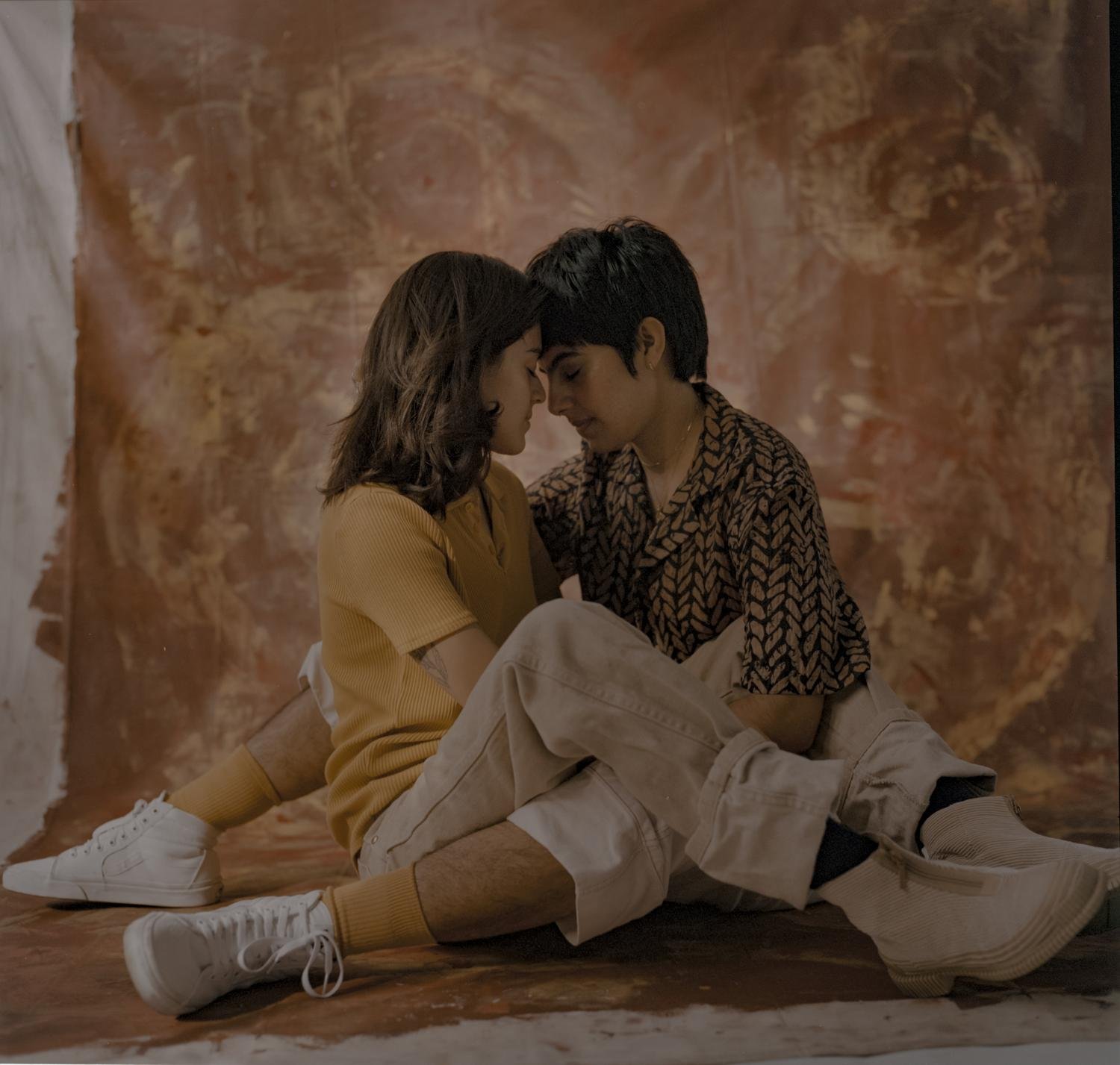Interview with Zayira Ray
Zayira Ray is a 23-year-old Indian-American portrait and fashion photographer born and raised in New York City. Rooted in themes of love, belonging, and community, she creates diverse and soulful visual stories, with a keen focus on expanding the scope of representation of women of color and stories from the South Asian diaspora.
Her photographs have been published in Vogue India, The New York Times, ELLE, i-D, Architectural Digest, and Vogue Magazine, amongst many others. Zayira recently completed her BFA in Photography & Imaging at NYU Tisch.
What does brown love look like?
“Brown Love'' is a photography series that aims to tell stories that are largely overlooked. It is a celebration and embrace of companionship, belonging, and intimacy across a wide scope of romantic, platonic, and familial relationships from the South Asian diaspora. With intention and care, these photographs depict brown love in its purest form: with tenderness, belonging, and everything in between. Centering brown women and other marginalized identities, the photographs are made against vibrant, hand-painted backdrops. Depicted in the position of agency rather than submission and in control of their own narratives, the body of work serves as a safe space for love and liberation— an escape from a world that is ridden with convention and suppression.









Can you tell us about your background as an Asian-American and how your culture influences your work as a photographer? How do you incorporate your culture and identity into your photography?
I am Indian-American. I grew up in New York, but I was kind of between New York, New Delhi, and Kolkata, which is where my family is from. Pretty much every summer, sometimes twice a year, I would be between India and New York. I think that growing up, I was almost resistant to having a dual culture; I felt like I was first and foremost an American. It was my home base and all my friends were in America. My experiences in India, on the other hand, felt very boxed into family ties. I think over the years I started to incorporate the two sides of my identity. As my work has grown as an artist and as a photographer, that has inevitably impacted my work as well.
How do you see representation in photography, and why is it important for all communities to be represented accurately and positively?
I think we’ve seen a surge of representation of different communities over the past three years. What I think about a lot is how those communities are represented; if they’re represented just to check off boxes— if they’re “represented” in terms of tokenization, simply at face value. As a photographer, an imagemaker, and someone who is actively documenting my community and similar communities, I feel an inherent responsibility to take a step further from the face value representation we often see. Instead,I try to represent communities in a way that feels honest and soulful, telling nuanced storiesthat deals with intersections of identities. I believe that this is especially important with photography because we all consume images, subconsciously or consciously. Regardless of whether you have a background in art, you’re still constantly consuming images and that shapes how we see those who are different from us.
What has been an especially special project in your career?
“Zameen” was a kind of turning point for my work. It ended up in Vogue India, but initially, it was a project between myself, Misha Japanwala, a Pakistani sculptural artist, and Aradhita Paramaruspira, an Indian textile designer Together, they made a collection of biodegradable body casts made of mycelium, .I creative directed and shot the final visual project for it, titled “Zameen.” It was a really collaborative and community-based process. We casted an all-South Asian team from the hair stylist, makeup artist, to all the talent. We worked with some amazing people: everyone workedcollaboratively and with no budget, because it was something we all were truly passionate about. And then, close to a year later, we got it into Vogue India in-print, which was amazing. I think that “Zameen” was a project thatwas one of those lightbulb moments of like, this is the kind of work I want to be making andthese are the kinds of people I want to work with. This is how I'm supposed to feel when I'm making work.
“I really want other people individually to look at my work and feel seen. And I think that’s, you know, it’s kind of a more general answer. But I think that is something that I would feel very satisfied with, like, at the end of my career at the end of my art practice, if I accomplished that. That would be wonderful.”







